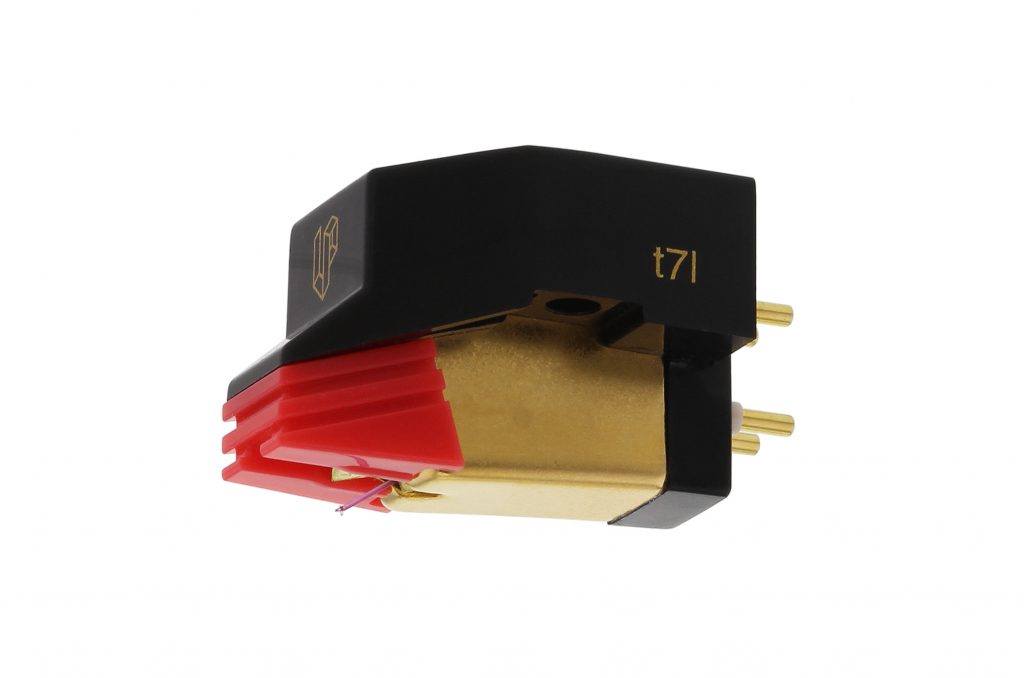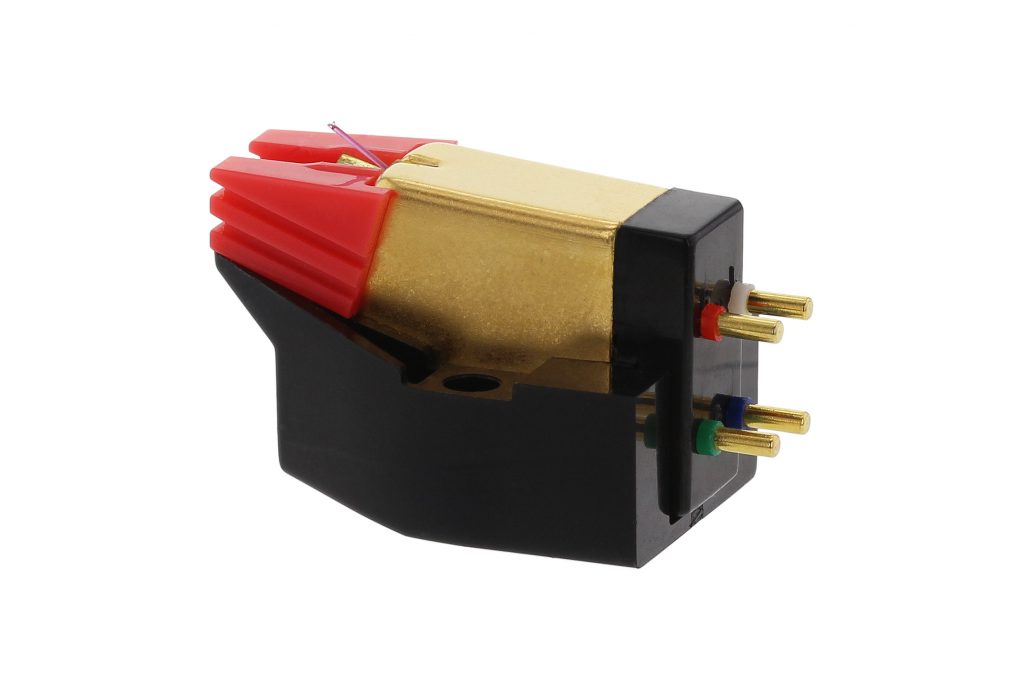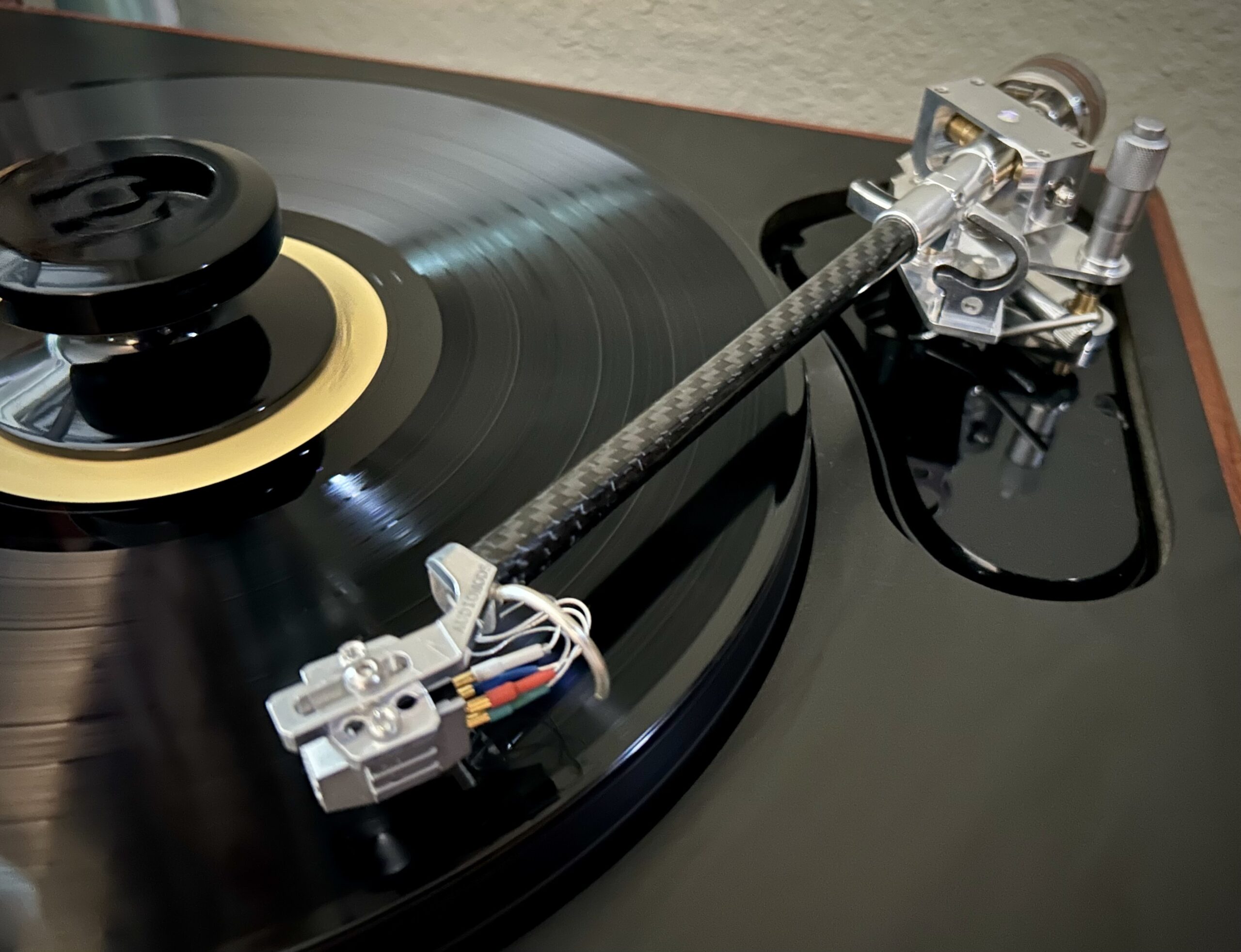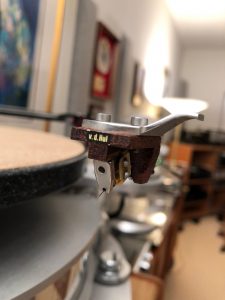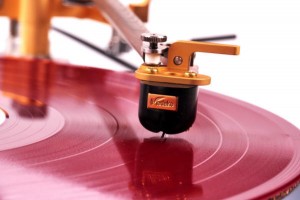When the final rays of light faded from the horizon on what was widely perceived as the twilight of analog playback in this hobby, there was a tragic loss of cartridge manufacturers and their parts suppliers. In those days, the high point of cantilever technology had been realized, and the stylus assembly mass of cartridges had been pushed to astonishingly small numbers. This reduction in mass resulted in improved tracking, quicker transient response, and finer resolution of detail. In those days cartridge manufactures offered designs with cantilevers made from beryllium, hollow tube gemstone or boron, and even combinations of titanium and diamond coating. Now most of these exotic materials saw use in the upper tier moving coil cartridges, yet there were moving magnet designs that used a gemstone cantilever. For instance, the F9E Ruby built by Grace Audio is one of the coveted moving magnet cartridges from that period. Today there are very few new production cartridges that use gemstone cantilevers, and these products typically start at the $1000 range. Now there has been an excellent bit of news, as Rome Castellanes of LP Gear has just released the Vessel R3SV, which is a moving magnet cartridge that is fitted with a ruby cantilever and an excellent stylus profile. Perhaps a bit of magic has been salvaged from those glory days of analog, and at a price that is remarkably affordable.
With a selling price of $530, the Vessel R3SV is an enticing package of sophisticated stylus profile and cantilever technology, coupled with an affordable yet capable cartridge body. This moving magnet cartridge does indeed sport a ruby cantilever along with a nude mounted Super Vivid Line Contact diamond. The cantilever is a single crystal cylindrical ruby rod, while the stylus has a footprint of 5µm × 20µm. Output voltage of the cartridge is 2.5 mV, and tracking force is recommended to be 2.0 grams. Of particular interest is that the body is the same as other versions of the Vessel cartridges, so it is possible to install the ruby cantilever assembly on a less sophisticated Vessel cartridge and have a meaningful upgrade in performance. The Vessel series of cartridges are manufactured in Japan, and Rome reports that the engineering team has devised a series of refinements in this stylus assembly that allows it to have a level of detail retrieval that is on par with many a moving coil cartridge. Now this is not to say that the upper level Lyra cartridges are facing a challenger, however it does mean this is not your stereotypical moving magnet cartridge with the recognized strengths and limitations of its kind. The body of this cartridge is utilitarian in appearance and materials, and the packaging is best described as frugal. The whole line of Vessel cartridges is positioned for value for the dollar spent, and the packaging reflects this.
The turntable for this review is a Galibier Audio Serac, which is currently fitted with a SOTA ST202 tone arm. I have added a Pete Riggle VTAF adjuster to this arm, so that proper VTA can be achieved during cartridge set up. I experimented with tracking force from 1.7 to 2.2 grams, and settled on the recommended 2.0-gram setting. The Vessel R3SV feeds into a Liberty B2B-1 phono stage, which is configured for 20 dB of gain in the MM setting. Amplification duties are taken care of by the First Watt F7 amplifier and a First Watt B1 preamplifier. Speakers used are the JBL 4365 monitors and power conditioning is handled by a PS Audio P10 AC Regeneration unit. Cables consist of Wireworld Eclipse 7 speaker wire, VH Audio Spectrum CU interconnects, and Pi Audio Group power cords. I broke the LP Gear cartridge in for 50 hours, although there were no meaningful changes I could detect after the 20 hour mark.
In issue 87 of Positive Feedback I had the good fortune to spend an extended time listening to the Vessel A3SM cartridge (HERE). I had daily listening sessions with this cartridge for several months, and this cartridge performed well across every genre of music I own. So, when Rome informed me that the latest Vessel cartridge had surpassed the last one I heard, I was certainly amenable to having an opportunity to hear it in on my table. When unpacking the R3SV cartridge, my first thought was to get a close look of the new cantilever and diamond. I will say that this stylus assembly is top flight in every way. The cantilever is a low mass affair, and the bond between cantilever and diamond is neat and tidy. The entire construction of the cartridge is solid, even if it does forgo the overbuilt and ornate case work that many current cartridges possess. The real question is how does it perform? I pulled Keep It Simple by Keb Mo out of my record rack, and decided to start with "Let Your Light Shine". [Keep It Simple; Epic MOVLP1058] From the opening passages, I could tell this cartridge was not your run of the mill moving magnet offering. The initial guitar notes had excellent tone and texture. The organ notes in the background have a realistic feel to them that I have experienced with higher end moving coil cartridges, but not your typical moving magnet. Keb's vocals are slightly gritty, yet maintain a delicate texture that creates an honest and natural presentation. This cartridge also did a fantastic job of presenting the detail of the snare drum passages. Not only could you clearly hear each strike, the notes decayed in a believable fashion, and you could easily experience the sound of the drum kit. While there was a fundamental character difference in certain aspects between my various moving coil cartridges and the Vessel R3SV, I could immediately tell that this was a quality product capable of high performance analog playback.
Let us take a moment to discuss tone and texture, and how the LP Gear cartridges fares in these areas. I spent an evening listening to some Blue Note reissues I have, and Cool Struttin' by Sonny Clark is certainly worth discussing. The opening track "Cool Struttin'" [Cool Struttin; Blue Note No.1588] told me exactly what I need to know about this cartridge, which is that the design team hit a home run regarding how this cartridge portrays the subtle shadings created by the decay pattern of instruments. The tone, and as importantly, the texture from Art Farmers trumpet, Clark's piano, and McLean's saxophone just sounded inherently right. The trumpet had that light breath of air from individual notes as they were being held and allowed to decay. On more forceful phrases, the metallic sheen of Farmers' trumpet is easily heard. This recording has a distinctive sound to the piano that is due to the recording techniques of this time period, yet it still has nice detail, and great harmonics to the blues infused solo passages. The telltale reediness of the saxophone is clearly presented, and has such a warm and textured sound that the instrument is presented in a remarkably realistic fashion. Both the trumpet and saxophone are recreated in such a beguiling manner, it is an enticing bit of aural candy to experience during a relaxing evening. I would be remiss if I did not mention the standup bass, even though I neglected to mention it at the beginning of this paragraph. This instrument also has a robust and full bodied tone, whether it is being plucked or bowed. The passage where Chambers has a bowed solo is a real treat to listen to as the sound is rich, textured, and has wonderful harmonic decay. In the all-important mid-band of music reproduction, the Vessel R3SV is a fine cartridge, and offers a solid value at its price point.
When it comes to representing the space a recording occupies, the ruby cantilevered Vessel turns in a competent performance that is on par with many of the affordable moving coil cartridges currently out on the market. I can think of a few high-output moving coil cartridges that I would say come in second place to this one. "Gravity's Angel" by Laurie Anderson [Mister Heartbreak; Warner Bros Records 25077-1] has many challenging spatial complexities that pose a stern challenge to a cartridge, and I find that the R3SV does an above average job in when tackling these obstacles. Anderson's vocals are presented up front in the sound stage, with a tight focus. The bells in the opening passage are properly located deeper into the right-hand side of the stage, yet are distinct and immediate in presence. The synthesizer notes glide across the back of the recording. Peter Gabriel's backing vocals are slightly diffuse, and located in the mid-level depth of the soundstage, slightly behind my speakers, as they are on my reference cartridge. These vocals could be focused a bit tighter, however this cartridge does indeed outpace other mid-priced cartridges I have asked to play this track. The various synthesized bass and drum notes are dynamic and powerful, with their location being located at several different points across the rear of the soundstage. All in all, the LP Gear cartridge has superb spatial characteristics that are reminiscent of affordable moving coil cartridges, and superior to any of the typical moving magnet cartridges on the market.
Perhaps this is an appropriate time to look at the limitations of the R3SV Vessel cartridge. The hard truth is that no cartridge that resides in the $500 price bracket is going to be faultless, as every one of them will have a unique combination of strengths and limitations. We have journeyed through an extensive list of this cartridges positive attributes, and I would be remiss if I did not spend a bit of time discussing what I find to be its limitations. Now my comparisons are made against my reference cartridges which are the ZYX 4D and the Ortofon Cadenza Red, which are $4000 and $1200 respectively. The only significant limitation I find with the LP Gear cartridge is that is does not possess the ultra-fine detail, shading, and layering to the music that these upper tier moving coils can bring to the table. This is not to say that the R3SV lacks detail, is overly romantic, or plodding in presentation. Matter of fact it is none of these things at all! The objective truth is that these moving coils excel in this area, and while this plucky ruby cantilevered cartridge performs admirably, it is just not quite able to match its more expensive brethren in this facet of analog playback. However, this is to be expected, and the R3SV does provide a generous amount of detail in the upper registers, and most importantly, it is well balanced with the other aspects of the music that the cartridge excels in. This is one of the products where the sum of its parts provides a level of performance that is greater than what should be expected.
Judith Pintar is a Celtic Harp player, and on "In Defense of Guinevere" [Secrets From The Stone; Narada LP123] her music is beautifully presented by this cartridge. Plucked strings are dynamic in attack, with a nice length of decay, and fine harmonic resolution. The difference is the ZYX 4D has just more of that elusive breath of life in the instrument, it just has an incrementally higher threshold of realism. Yet keep in mind we are discussing the difference between a cartridge that sells for $530, and another that sells for $4000. This is not a fair comparison. Now I do have access to the Vessel A3SM cartridge, which uses a Microline diamond profile that is technically more advanced than the line contact version on the R3SV cartridge. The design team has taken a great deal of care in matching that diamond profile to the aluminum alloy cantilever. The Ruby Vessel cartridge also has a package of adjustments to the suspension of the stylus assembly to optimize the characteristics of this cantilever and diamond profile. The comparison is not just between cantilever materials with different versions of line contact stylus profiles, but rather the end result of how the design team tunes and refines each assembly. Now, between these two cartridges I do have a definite preference for the R3SV, as it nudges its sibling out in terms of detail resolution, and dynamic expression. Yet both are fine cartridges, with differing personalities and slightly different take on how music is presented. In the end, my choice is for the one sporting the gemstone cantilever.
Within our audio hobby, there are many people who feel we are amid a rebirth of analog playback. While it is true that technology from the first analog die off has been lost, and it is uncertain if those manufacturing techniques will ever be fully recovered. Yet there is a renaissance of analog equipment that is invigorating and gives hobbyists a new degree of hope and optimism about our love of playing records. It takes folks like Rome Castellanes, and many other analog manufacturers who are willing to invest their resources and efforts to bring quality products to the market for us to enjoy. The Vessel R3SV is one such product that needs to be recognized for being a high-performance cartridge that is affordable and accessible to hobbyists. The ruby cantilever and line contact stylus are the foundational pieces of this fine cartridge. The low tip mass and sophisticated diamond profile combine to retrieve a great deal of information from the grooves of a record. The LP Gear cartridge, is tonally cohesive octave to octave, has detail and texture, and is dynamically expressive in a way few moving magnet cartridges are. There is a cohesive nature to how this cartridge presents music, and it cedes precious little to most of the entry level moving coil cartridges available today. For those hobbyists looking for a high performance moving magnet cartridge, I would suggest giving the Vessel R3SV a serious audition, as this cartridge offers a great deal of value for its modest price tag.
Vessel R3SV Cartridge
Retail: $530
LP Gear




